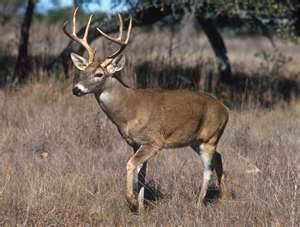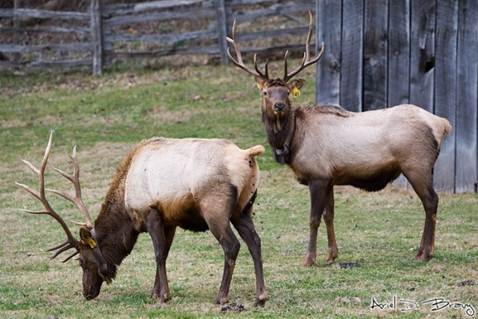Information Sheet
Cervid Info Sheet.docx
Cervid 2014 Study
Information Sheet
OMB: 0579-0417
Info Sheet
United States Department of Agriculture

![]()

Date
National Animal Health Monitoring System to Study Cervid Industry in 2014
The U.S. Department of Agriculture’s (USDA) National Animal Health Monitoring System (NAHMS) conducts national studies on the health and management practices of the U.S. livestock, poultry, and aquaculture industries. These studies are designed to meet the information needs of the respective industries and their stakeholders—as identified by those working with these industries. In 2014, NAHMS, in cooperation with the National Agricultural Statistics Service (NASS), will conduct the first national study of the U.S. farmed-cervid industry.
NAHMS Cervid 2014 study
Study objectives:
Provide a baseline description of the U.S. farmed-cervid industry, including inventory, species, operation size, and operation type.
Describe current U.S. farmed-cervid production practices and challenges, including animal identification, fencing, animal care and handling, trade and movement, and disease testing.
Describe the producer-reported occurrence of epizootic hemorrhagic disease (EHD) and the management and biosecurity practices important for controlling EHD on cervid farms.
Describe health management and biosecurity practices important for the control of infectious diseases on cervid farms.


What your participation involves
Participation in all NAHMS studies is voluntary and confidential. Operations are selected randomly, and those selected will be contacted by NASS, the USDA agency responsible for the study’s data collection. If you are selected to participate in the Cervid 2014 study, you can expect the following general activities and schedule:
During August 2014, NASS will send you a letter explaining the study.
Shortly thereafter, you will receive a study questionnaire in the mail.
If the questionnaire is not returned, a NASS representative will contact you via telephone and offer to help you complete the questionnaire over the phone.

“It is essential that all cervid producers participate in the NAHMS Cervid 2014 study. The vital information the study will provide will help our industry learn more about itself and, at the same time, help inform our stakeholders. Other industries have benefited from NAMHS studies in the past, and I fully expect that the Cervid 2014 study will help our industry in both the short and long term.”
Clifford F. Shipley, DVM, DACT
Agricultural Animal Care and Use Program
University of Illinois
College of Veterinary Medicine
Your participation in the Cervid 2014 study will help NAHMS develop reliable and accurate national estimates about important issues facing the U.S. farmed-cervid industry. This valuable information will have many uses, including:
Assisting university researchers, extension agents, producer groups, and others in identifying and focusing educational efforts on vital issues related to farmed-cervid operations.
Assisting animal-health officials, policymakers, and industry members in making informed decisions to help protect U.S. agriculture and animal health.
How you will benefit
By participating in the Cervid 2014 study, you will receive a variety of reports and information sheets that will enable you to compare your operation with other cervid operations. These publications will present study data on general management and marketing topics—including management decisions and practices— as well as specific health-related issues.
A scientific approach
NAHMS collects and reports accurate and useful information on animal health and management in the United States. Since 1990, NAHMS has developed national estimates on disease prevalence and other factors related to the health of U.S. beef cattle, sheep, goat, dairy cattle, swine, equine, poultry, and catfish populations. The science-based results produced by NAHMS have proven to be of considerable value to the U.S. livestock, poultry, and aquaculture industries as well as to other animal-health stakeholders. NAHMS studies are
National in scope,
Science based,
Statistically valid,
Collaborative,
Voluntary, and
Confidential.
Confidentiality
Because NAHMS studies rely on voluntary participation, the privacy of every participant is protected. Only those collecting the data know the identity of the respondent. No name or contact information will be associated with individual data, and no data will be reported in a way that could reveal the identity of a participant. Data are presented only in an aggregate manner.
_____________________________
For more information, contact:
USDA–APHIS–VS–CEAH–NAHMS
NRRC Building B, M.S. 2E7
2150 Centre Avenue
Fort Collins, CO 80526-8117
970.494.7000
http://nahms.aphis.usda.gov
#693.
___________________________________
The U.S. Department of Agriculture (USDA) prohibits discrimination in all its programs and activities on the basis of race, color, national origin, age, disability, and where applicable, sex, marital status, familial status, parental status, religion, sexual orientation, genetic information, political beliefs, reprisal, or because all or part of an individual’s income is derived from any public assistance program. (Not all prohibited bases apply to all programs.) Persons with disabilities who require alternative means for communication of program information (Braille, large print, audiotape, etc.) should contact USDA’s TARGET Center at (202) 720–2600 (voice and TDD). To file a complaint of discrimination, write to USDA, Director, Office of Civil Rights, 1400 Independence Avenue, S.W., Washington, D.C. 20250–9410, or call (800) 795–3272 (voice) or (202) 720–6382 (TDD). USDA is an equal opportunity provider and employer.
Mention of companies or commercial products does not imply recommendation or endorsement by the U.S. Department of Agriculture over others not mentioned. USDA neither guarantees nor warrants the standard of any product mentioned. Product names are mentioned solely to report factually on available data and to provide specific information.

United States Department of Agriculture • Animal and Plant Health Inspection Service • Safeguarding American Agriculture
| File Type | application/vnd.openxmlformats-officedocument.wordprocessingml.document |
| Author | Berry, Anne L - APHIS |
| File Modified | 0000-00-00 |
| File Created | 2021-01-28 |
© 2025 OMB.report | Privacy Policy